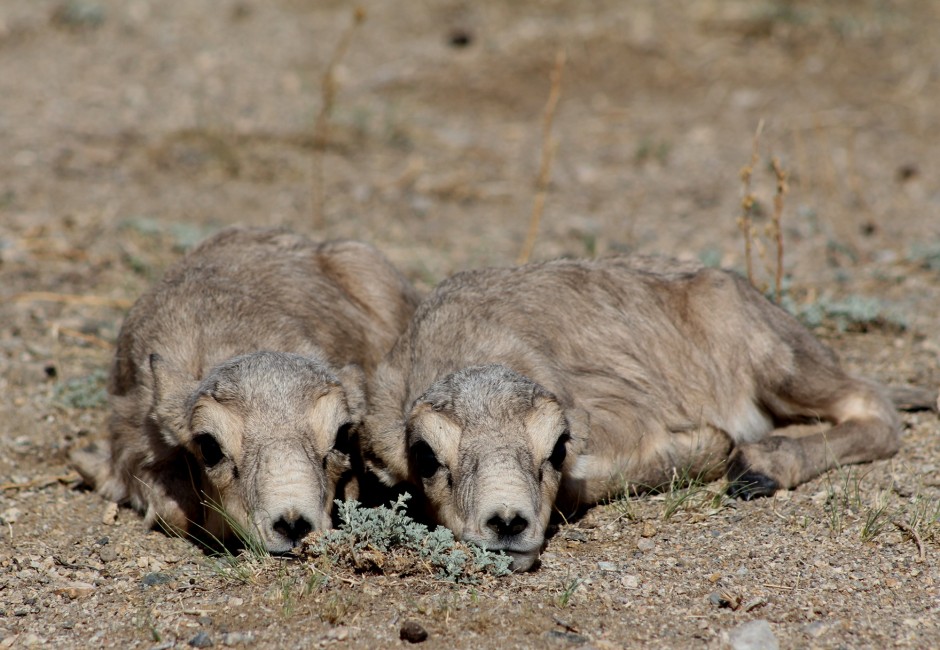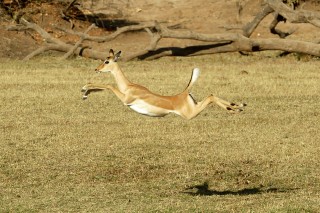
March 3, 2016
Story of the Saiga
- as seen by -
 Peter Zahler and Buuveibaatar Bayarbaatar
Peter Zahler and Buuveibaatar Bayarbaatar
It was one of the most dramatic conservation disasters in recent history.
It was also one of the greatest conservation success stories in recent history.
And once again, it is a staggering disaster, while also now one of the greatest mysteries facing conservation.
“It” is the story of the saiga, that sway-backed, spindle-legged, bulbous-nosed antelope that once thundered across Central Asia’s grassland steppe region in the millions. Its bizarre looks are only bested by its byzantine and tortured history (above, twin calves.)
In the 1990s, the collapse of Soviet control across Central Asia led to a free-for-all in resource extraction. This included poaching saiga for its horns, which are highly valued in Asian traditional medicine. A once super-abundant animal was quickly driven to near-extinction by rapacious commercial hunting in only two decades – from well over a million animals to roughly 50,000 by the early 2000s. That’s a 95% decline in only 20 years.
However, the combination of near economic extinction (it was no longer cost-efficient to commercially hunt the few remaining animals) and better enforcement and attention toward the saiga’s plight brought them back from the brink. Saigas breed quickly if given the opportunity, and what was a tiny population quickly swelled to nearly 300,000 animals by the end of 2014.
Then, in the spring calving season of 2015, roughly 200,000 saiga died within two weeks – two thirds of the population dead in a brief flicker of time, their corpses strewn across the empty steppe. A disease has been implicated, likely set off by some still-mysterious environmental trigger.
The vast steppes of Central Asia have always held a mysterious allure, with history’s relentless sweep leaving the ghosts of Genghis Khan’s great armies and ancient Silk Route traders as phantoms on the edge of our collective imagination. The unique and delightfully bizarre saiga antelope once again threatens to join those Central Asian ghosts as only a memory of what once was.
Canon D60




Leave a Comment
Lynn Edgar
March 3, 2016 at 3:23 pm
Are there any studies, programs being done to try to save these animals? As the mother of identical male twins, I am partial to helping creatures that also produce 2(+) at a time. Also, these little ones look very “new” and in need of physical stimulation.
waltraud a. milani
March 3, 2016 at 3:29 pm
thank you wcs.org for protecting wild life – for informing – spreading the word – people need to learn to see beyond their own little world – to build up more strength to fight cruelty – and have a world wildlife day every day of the year !!!
Kathy Brady
March 4, 2016 at 11:54 am
Thank you for raising awareness of these amazing animals….what a beautiful and touching photo!
Wild View Editor
March 7, 2016 at 2:12 pm
Thank you for your comments.
WCS has been working to save the saiga population in Mongolia for a
decade. We are hoping to implement a health assessment project this year,
as this population comes into contact with livestock regularly and thus is
potentially exposed to disease threats on a regular basis.